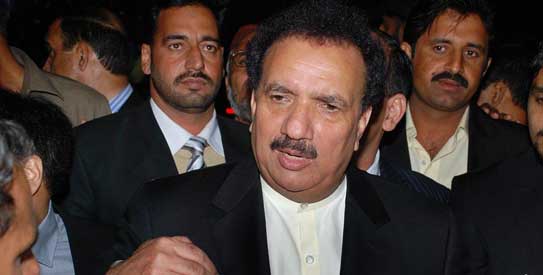LAHORE, Feb 6: The Punjab University archaeology department has discovered a rare Indus seal in steatite material with carved figure of Ibex with two pictographs from Wattoowala, Cholistan, during a survey of different sites near Derawar Fort along the ancient bed of River Hakra.
The seal dates back to 2500-2000 BC.
The seal has been discovered by a six-member team of archaeologists headed by PU archaeology department chairman Dr Farzand Masih, who has just concluded a Unesco-funded US$26,000 project “Sui-Vihar Excavations and Archaeological Reconnaissance of southern Punjab”.
Dr Masih told Dawn that the discovery would open new dimensions for scholars. The seal has a perforated boss in the back with variant style from Harappan seals showing the regional influence and perhaps a separate identity in the Harappan domain. The seal is almost square in shape and slightly broken from the right side but figure of Ibex is almost intact. The muscles, genitalia, hooves and tail of the Ibex were engraved artistically with high proportion of skill and craftsmanship.
Under the project, Dr Masih said the PU team had also taken up the gigantic task of exploring the sites along the Hakra River in spite of the inhospitable climatic conditions. He said the team surveyed different sites including the Mihruband, Derawar Ther, Charoyanwala, Sunkewala, Pararewala, Sheruwala, Ganwariwala, Siddhuwala and Wattoowala. He said the cultural material collected from various mounds witnessed the presence of Early, Mature and Late Harappan settlements.
Under the project, Dr Masih said the team also conducted excavations at Sui-Vihar, which was the only existing example of Sankhya doctrines in Pakistan. He said the tablet on the stupa consecrated by Balanandi in the 11th regnal year of Kanishka-I suggested that the Vihara was constructed to impart the philosophy of Sankhya/Samkhya to the devotees. He said the Sankhya was one of the six Hindu orthodox philosophy attributed to sage Kapila. The Sankhya doctrines were based on the renunciation of the worldly affairs and to undertake severe penances to perform yoga to attain the nirvana. The vedic cosmological-ritual, mysticism and the philosophical views of the six darsanas were the stages for the liberation (moksa) from the sequence of birth, death and re-birth (samsara).
The archaeologists team leader said the excavation revealed a circular platform at Sui-Vihar built with sun-dried bricks and a number of supporting walls to hold the platform and the cylindrical structure. He said the remnants of a votive stupa suggested that the place might had been converted to Buddhist establishment when Kanishka-I embraced Buddhism. In spite of this, he said, Kanishkas had great respect for other faiths and beliefs. There was religious toleration and fraternity amongst the believers of different religious cults. “The plan laid bare by the team is understudy and likely to shed more light on the architectural grandeurs of Kushana period,” he added.
Dr Masih said the team had also combed the Cholistan desert in the vicinity of Derawar Fort. Prior to that, he said, Sir Aural Stein and Henry Field had conducted the survey in 1941 and 1955, respectively. After the Independence, he said, Dr Muhammad Rafique Mughal had conducted an extensive survey during 1974-77 and discovered altogether 424 settlements on a 24-32 km wide strip on both sides of the dry bed of Hakra River.
He said the Mughals’ work in Cholistan had established a new dimension in the understanding of Indus cultures in Cholistan but unfortunately any indigenous or foreign scholar could not precede his work further even after three decades. Consequently, he said, the PU took the gigantic task of exploring the sites in spite of the inhospitable climatic conditions and surveyed some 25 sites in Cholistan Desert, which eventually led to the discovery of the rare Indus seal.
During explorations in Cholistan, the archaeology department chairman told Dawn that the team had also recorded flagrant violation of the Antiquities Rules to the cultural mounds which had been subjected to the worst human vandalism. “The land grabbers and other mafias have brutally murdered the cultural heritage while sinking tubewells on the mounds and ploughing the mounds to convert them into farm lands,” he said.
Dr Masih said the private land owners had sold the land including the cultural mounds and now the attitude of the new buyers towards the heritage was very hostile and it was feared that if no concrete steps were taken to safeguard the relics of the past, it might meet the fate of ruins of Harappa that suffered colossal damage during the laying of Lahore-Multan railway track.
“The entire scenario shows the dexterity of the investors and the pathetic attitude of the agencies responsible for cultural heritage of Pakistan,” he observed.












































